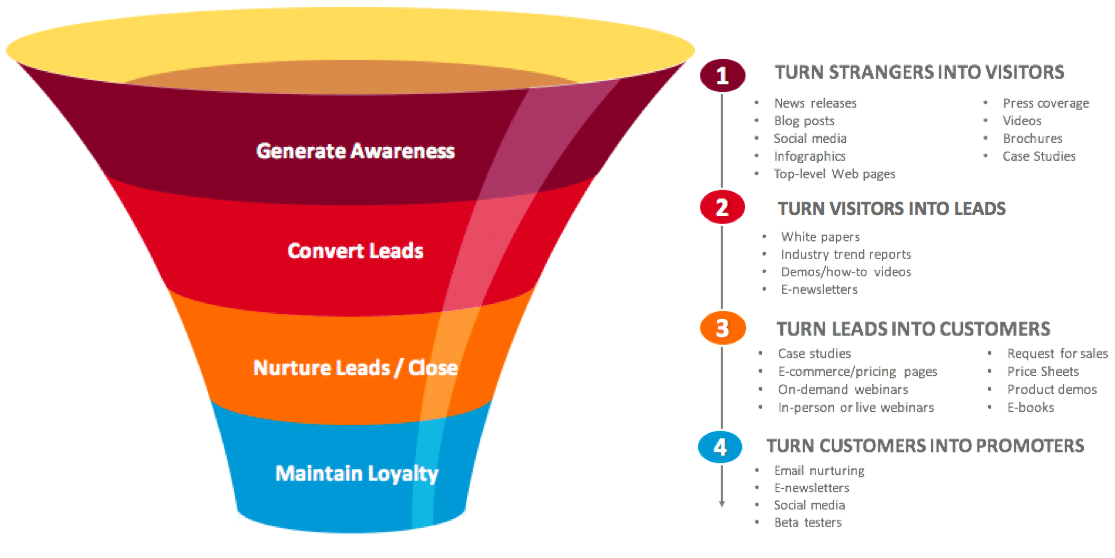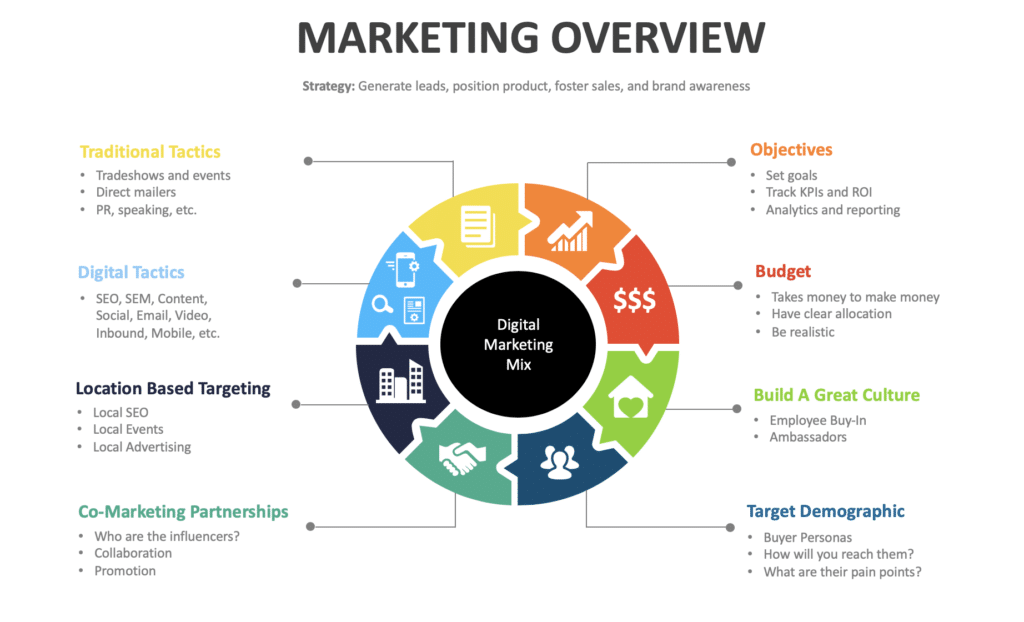What, Why, and How to Create Lead Funnels
Updated on 10th June, 2024
A lead is a person or business that might have an interest in what you are selling. Without leads, sales and marketing teams will have little to work with as leads directly correlate to revenue. So, to increase revenue, you need to generate leads. And, to get leads to buy, you need to get them through a funnel. Thus, building a lead funnel is crucial to sales success.
Lead generation can be achieved through various means. One of the most common is through advertising, which can encourage people to click on a link or contact the company in another way. Companies also use lead magnets and other incentives to get their information.
Raw leads are unlikely to be ready for anything and trying to do so too soon is only likely to scare them away. For example, somebody reads a blog post of yours coming from Google search and you are able to get their email. Can you get them for a sale directly? No. Instead, they need to be worked with and slowly nurtured, and only when they start getting interested in your product can you go for the sale.
To help marketing teams take a raw lead to the point where they are ready for the sales conversations, lead funnels are used.
In this blog, we will provide you with a comprehensive understanding of what lead funnels are, why they are needed, the four stages of a lead funnel, and how you can build one successfully.

Image Source: https://www.trewmarketing.com/
What Is a Lead Funnel?
A lead funnel is a workflow that helps marketers guide leads through the conversion process. The general idea is that raw leads are poured into the top of the funnel and customers come out at the other end, albeit only a small percentage will make it all the way through.
A good lead funnel will consist of different stages. With each stage acknowledging how far through the conversion process a lead is. Leads will be interacted with according to the stage they are at in the funnel, with the intention of leading them through to the next stage.
Why are Lead Funnels Needed?
Lead funnels are needed because they help marketing teams devise workflows that help with the conversion process. They also help marketing teams recognize the stage individual leads are at, helping marketers interact with them accordingly.
Without a lead funnel, it would be very difficult for marketers to work with leads and nurture them predictively. Sales would be left trying to sell to leads that are nowhere near ready to buy anything and without knowing what warm leads are interested in.
Many potential customers would be lost and the lead generation process could end up costing more than any revenue generated.
Stages of a Lead Funnel
A lead funnel is a type of workflow and as with any workflow, there will be different stages. The different stages of a lead funnel workflow are usually defined as those below:
Awareness
As raw leads are poured into the top of your funnel, they will enter the awareness stage. The leads are unlikely to have much interest in buying the product at this point, and are instead just looking for information. Marketing teams can nurture leads through content, emails, retargeting ads, etc. to slowly earn their attention. Once they are interested, they would book a demo or sign up for a trial or strike a conversation through live chat.
Interest
Leads that enter the interest stage have developed an interest in the product. They are not ready to buy yet, however, and they still have questions, reservations, and objections that prevent them from handing over their money. It is up to both marketing and sales to help overcome these to get them to the decision stage of the funnel.
Decision
When at the decision stage, the lead is likely considering which product to choose. They might still be looking at similar products from other companies, however, there is still work to be done before a sale is made. At this point, sales would already be talking to them at this point, but marketing needs to share resources to be able to demonstrate that your product is more beneficial than the products of competitors and that it represents good value for money.
This is where sales and marketing alignment and “revenue marketing” come into play.
Action
When a lead is finally ready to buy, it is time to get them to take action. You have to present them with an offer they are interested in and there is a good chance of getting a positive result here. It is at this point that the sales team is doing the heavy lifting. A hot lead could easily go cold if not sold in time, or a competitor might swoop in.
Thus, it is important to strike when the time is right.
How to Build a Lead Funnel?
To build lead funnels yourself, you will need to start by defining your customer’s journey through the funnel. This means identifying the questions and obstacles that need to be overcome before they move onto the next stage.

Image Source: https://suttida.medium.com/a-guide-on-how-to-build-a-marketing-funnel-for-lead-generation-32661aaa2db9
With the customer’s journey defined, you need to create content to help guide them through that journey. The aim of the content is to help answer their questions, share valuable information, and earn their trust. As a lead progresses through the funnel, the content should do more to educate the prospect and demonstrate how the product will help their business to operate more smoothly and/or increase their profits. You will also need to create assets like email campaigns, landing pages, support guides, etc. to share the information. Additionally, you will also need to create landing page forms to help you get a lead’s information.
To really make the most of marketing and sales funnels, you will need to use a marketing automation and enablement platform. This will automate the process for you, helping you to work with even very large databases easily. Marketing automation platforms can also help you to track and segment your leads, qualify them and help you work with your leads as individually as possible while working on a scale at the same time. Salespanel is something you can try out.
Three Tips To Optimize Your Lead Funnels
Here are three tips to optimize your lead funnels to generate high-quality leads:
1. Qualifying Leads and Nurturing Them
You can implement a robust lead scoring system to prioritize leads based on their engagement level and likelihood to convert. Once you do that, you can assign scores based on actions such as email opens, website visits, and downloads. This helps sales teams focus on high-quality leads and tailor their approach accordingly. In addition to this, you might develop automated lead nurturing campaigns using email workflows to maintain engagement with leads who are not yet ready to buy. Personalized and timely follow-ups based on lead behavior can also significantly improve conversion rates.
2. Using Targeted Content Marketing
You are undoubtedly losing out on a lot of possible leads if your company is limiting its lead generating efforts to just one approach.
Thus, it is critical to broaden your perspective and experiment with various lead generation tactics. Content marketing is one of the most widely used lead-generation methods. To maximize this tactic, you can start creating and distributing high-quality content that resonates with your target audience at different stages of the funnel.
In the awareness stage, focus on informative and engaging content such as blog posts, social media updates, and videos that address common pain points and interests. For the interest and consideration stages, you need to provide more detailed and valuable content like ebooks, webinars, and case studies that demonstrate your expertise and offer solutions to specific problems. Finally, in the decision stage, you can offer product demos, free trials, and customer testimonials to help potential leads make informed decisions. Tailoring content to each stage keeps prospects engaged and nurtured throughout the journey.
3. Aligning Sales and Marketing
Aligning sales and marketing is crucial for optimizing the lead generation funnel. This starts with establishing shared goals and metrics, such as lead quality and conversion rates, ensuring both teams have a unified focus. Regular communication through meetings and strategy sessions fosters collaboration and alignment.
A clear lead qualification process defines marketing-qualified leads (MQLs) and sales-qualified leads (SQLs), ensuring smooth transitions. Integrated CRM and marketing automation tools streamline data sharing and track lead interactions in real-time, enhancing visibility. Feedback loops allow sales to provide input on lead quality and marketing strategies, refining efforts based on sales outcomes. Collaborative content creation ensures marketing materials address sales objections, maintaining consistent messaging and better supporting the sales process. This cohesive approach enhances lead generation and drives business growth.
Conclusion
With lead funnels, you can turn more of your leads into customers. A lead funnel will help you understand the customer’s sales journey better and know how to work with them to take them through this process in a satisfying manner. Lead funnels can also help you to recognize where you may be losing leads and where you can tighten up to improve your conversion rates. While lead funnels can be very complex, even simple funnels and experiments can be effective at giving your business a significant boost in revenue.
Sell more, understand your customers’ journey for free!
Sales and Marketing teams spend millions of dollars to bring visitors to your website. But do you track your customer’s journey? Do you know who buys and why?
Around 8% of your website traffic will sign up on your lead forms. What happens to the other 92% of your traffic? Can you identify your visiting accounts? Can you engage and retarget your qualified visitors even if they are not identified?



